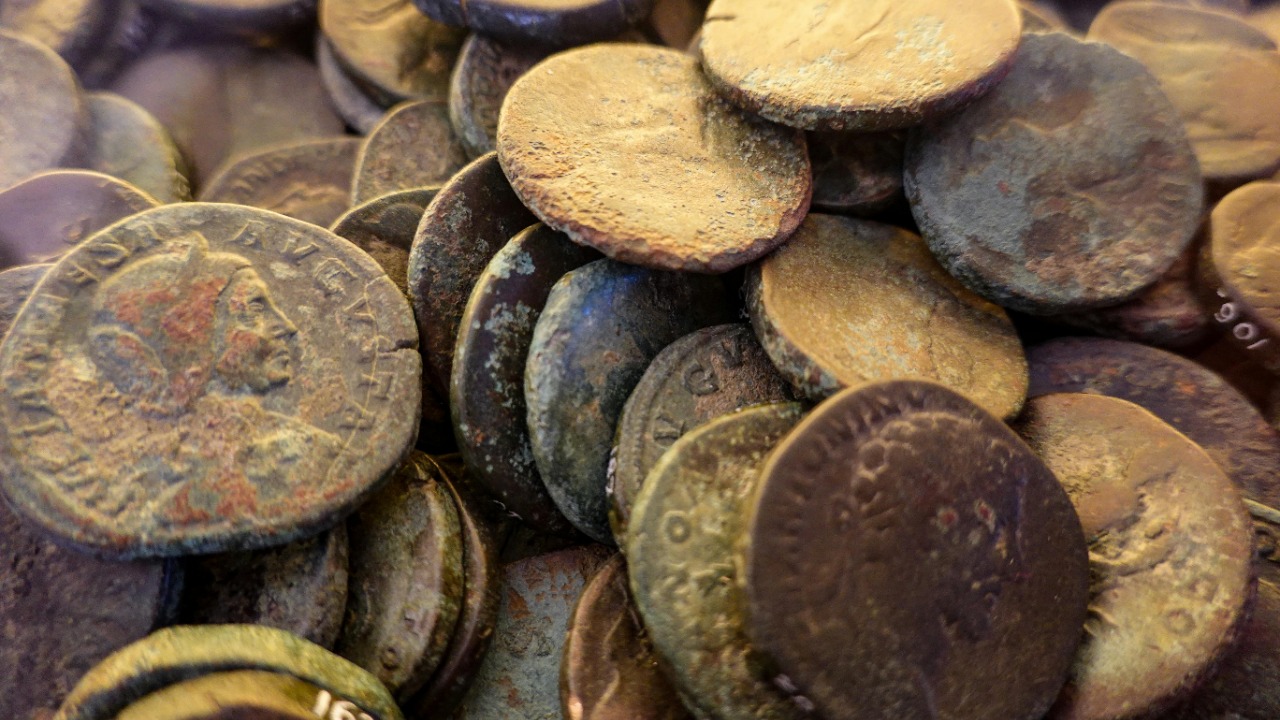
An illegal metal detectorist in Germany stumbled upon a massive hoard of Roman treasure, which he kept hidden from authorities for eight years. The discovery, made in a field near the town of Bieberehren, includes over 600 gold and silver coins, jewelry, and artifacts dating back to the 3rd century AD. This significant archaeological find highlights ongoing tensions between amateur treasure hunting and legal protections for historical sites in Europe.
The Illegal Search
The allure of discovering hidden treasures often drives individuals to take risks, as was the case with the metal detectorist who ventured into a protected area near Bieberehren, Germany. Despite strict German laws prohibiting metal detecting without permits, especially in areas rich with Roman-era history, the detectorist proceeded with his unauthorized search. The initial excitement of the find was sparked by signals from buried metal objects, which led to the unearthing of a remarkable hoard. However, the thrill of discovery was quickly overshadowed by the fear of legal repercussions, prompting the detectorist to conceal his find.
German regulations are stringent when it comes to protecting cultural heritage, and the use of metal detectors in such areas is heavily restricted to prevent unauthorized excavations. The detectorist’s decision to hide the discovery was driven by the potential for severe penalties, including fines and imprisonment. This case underscores the delicate balance between the desire to uncover historical artifacts and the need to preserve them within legal frameworks.
Uncovering the Hoard
The hoard itself is a treasure trove of historical significance, comprising more than 600 Roman coins in gold and silver, along with intricate jewelry and other artifacts from the 3rd century AD. The detectorist’s clandestine excavation process involved multiple secret visits to the site, during which he carefully retrieved items without the use of official tools or documentation. This painstaking effort highlights the lengths to which individuals will go to secure such finds, despite the risks involved.
The estimated value and rarity of the items position this hoard as one of the largest Roman treasures found in Germany in recent decades. Such discoveries are invaluable to historians and archaeologists, offering insights into the Roman era’s economic and cultural landscape. However, the unauthorized nature of the find complicates its integration into the broader historical narrative, as the lack of proper documentation can obscure important contextual information.
Eight Years in Hiding
The decision to keep the hoard hidden for eight years was not taken lightly. The detectorist grappled with the ethical dilemma of reporting the find, weighed against the fear of legal consequences for his illegal activities. During this period, the hoard was stored privately, with the individual bearing the burden of secrecy. This prolonged concealment reflects the internal conflict faced by those who find themselves in possession of such significant artifacts outside the bounds of the law.
The personal impact of this secret was significant, as the detectorist lived with the constant fear of discovery and the potential repercussions. Ultimately, the decision to come forward was driven by a desire to see the artifacts preserved and studied, despite the personal risks involved. This case highlights the complex motivations and challenges faced by amateur archaeologists operating outside legal frameworks.
Revelation and Aftermath
In 2025, the detectorist finally disclosed the existence of the hoard to German archaeologists, leading to its official verification and transfer to a museum. This revelation marked the end of a long period of secrecy and the beginning of a new chapter for the artifacts, which can now be studied and appreciated by experts and the public alike. The legal consequences for the detectorist are still unfolding, with investigations underway. However, there is a possibility of leniency due to the voluntary surrender of the hoard under heritage laws.
The broader implications of this case for amateur archaeology are significant. It underscores the need for stricter enforcement against illegal detecting while also highlighting the potential contributions such finds can make to historical studies. The discovery has reignited discussions about the balance between encouraging public interest in archaeology and ensuring the protection of cultural heritage sites. As the hoard becomes part of the public domain, it serves as a reminder of the rich history that lies beneath our feet and the responsibilities that come with uncovering it.
For more details on this discovery, visit Live Science.